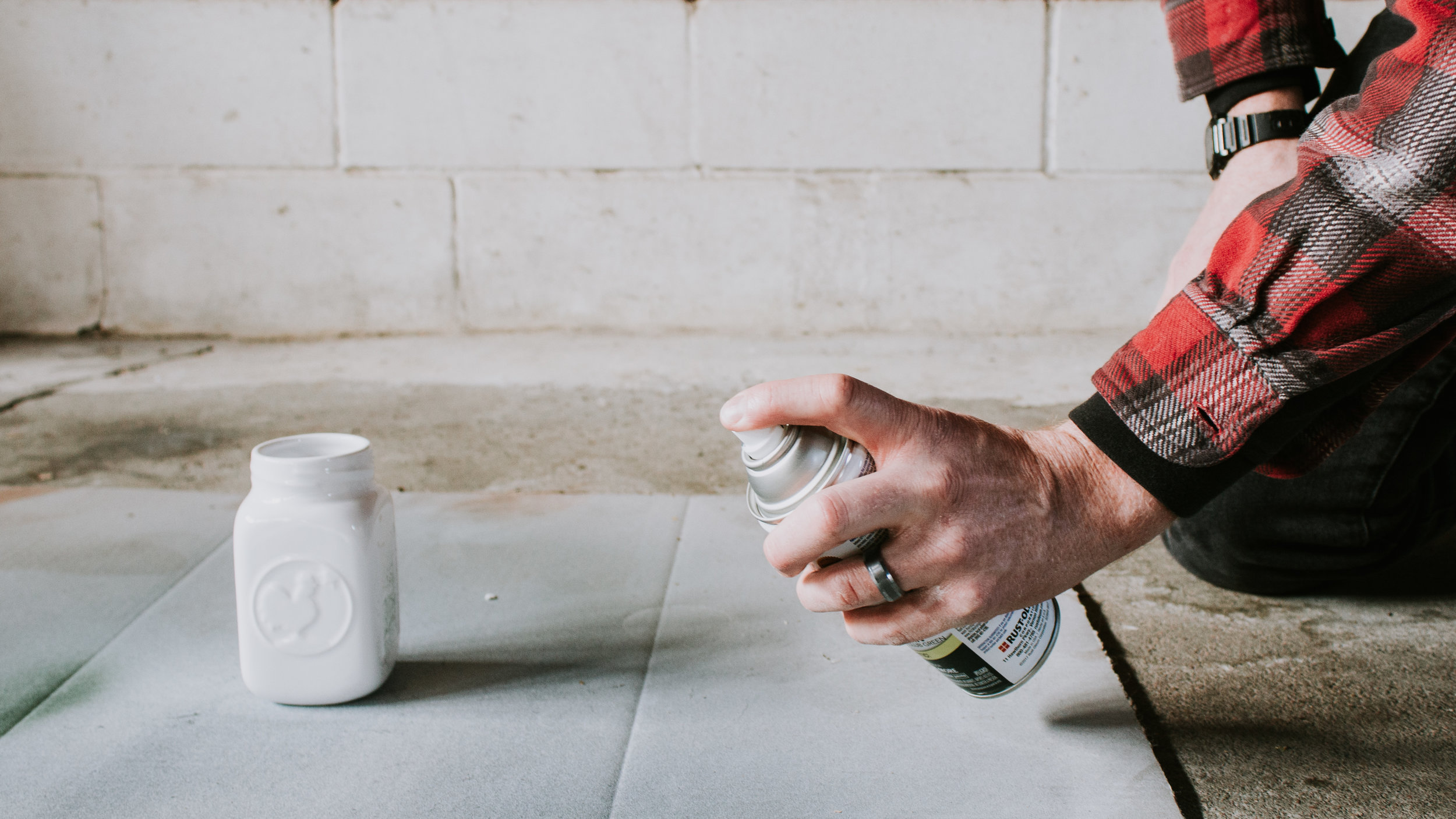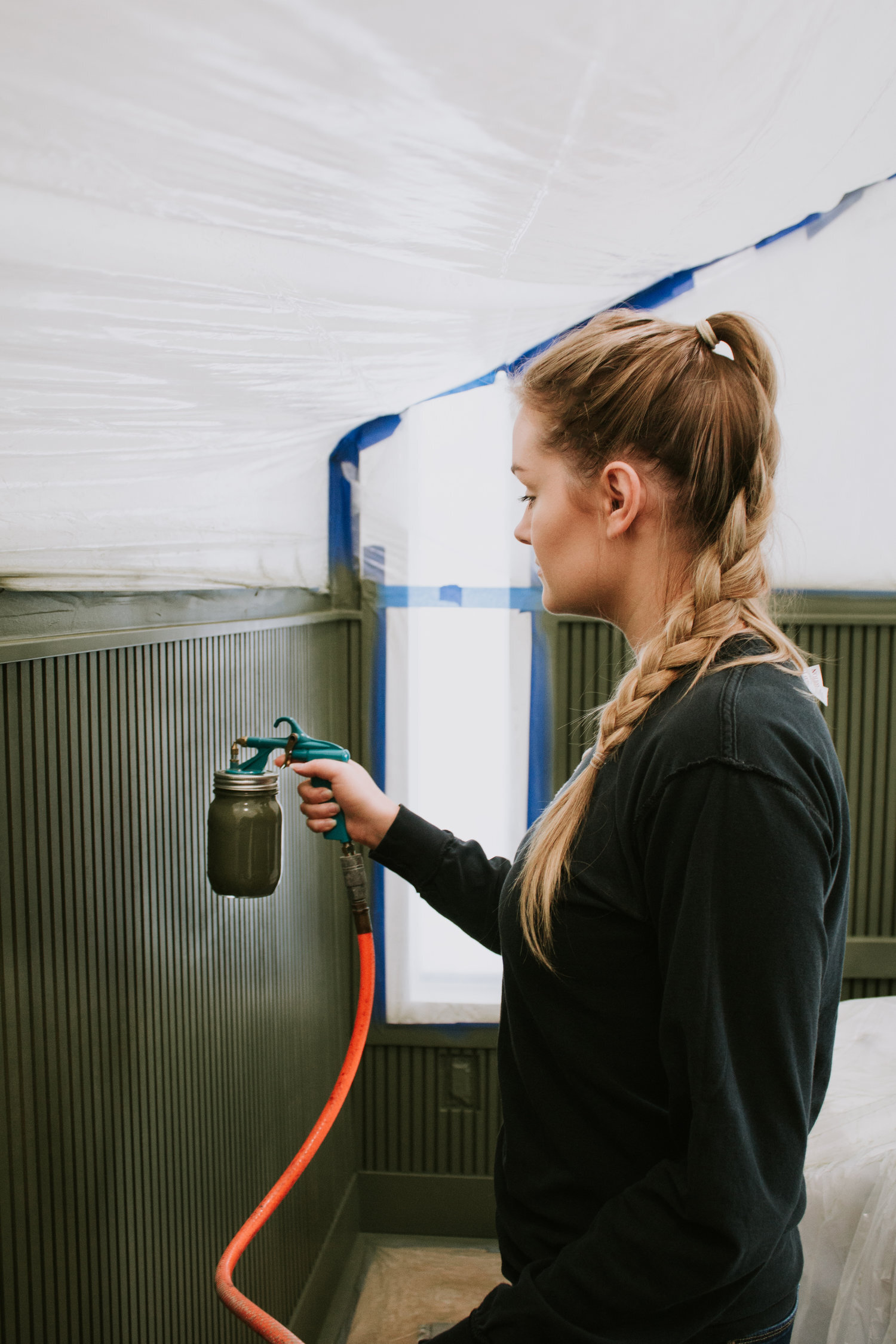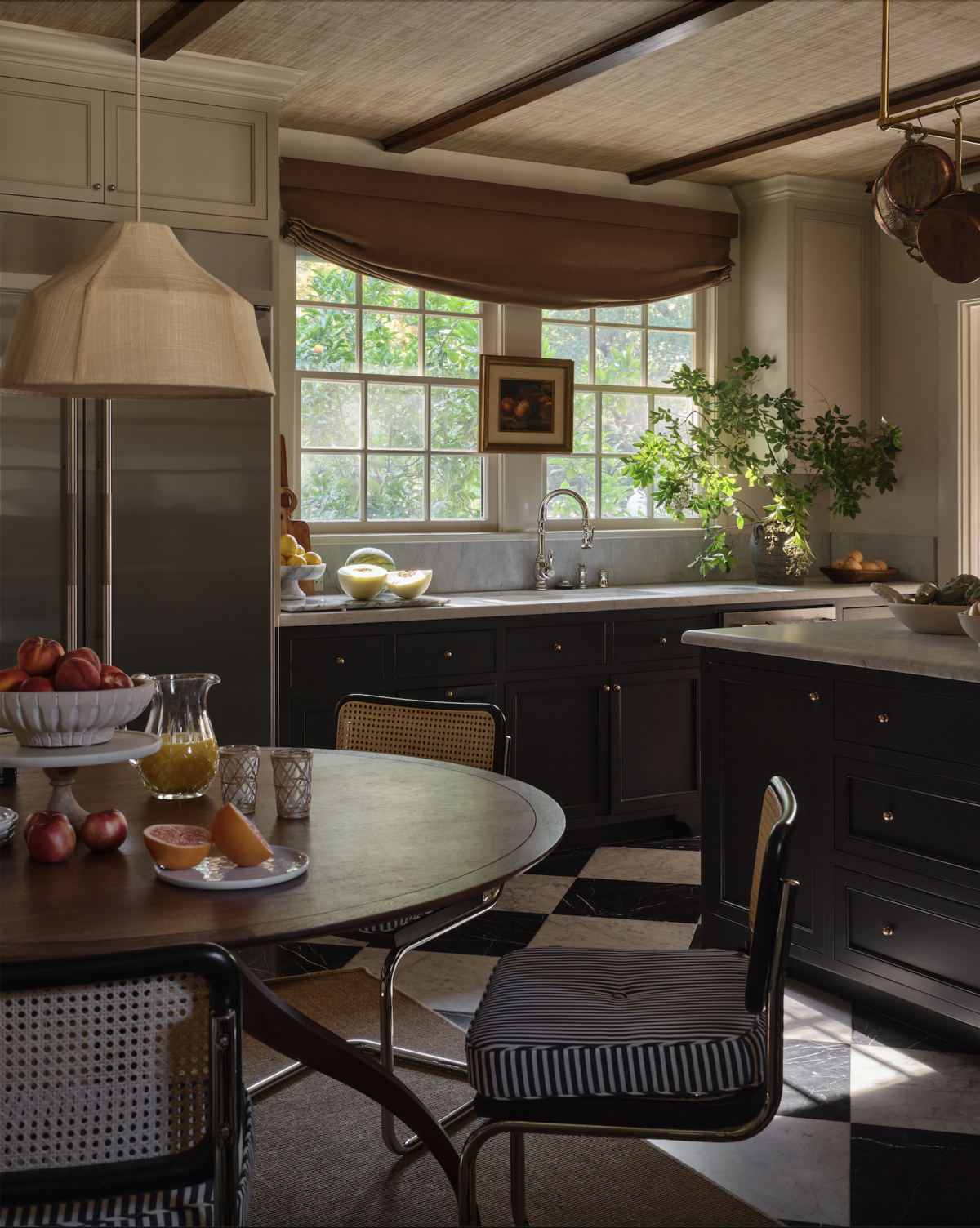About 3 years ago I started spray painting my projects instead of using a brush and I will never go back! One coat coverage with spray paint is phenomenally better than one coat with a brush and not to mention you don’t see brush strokes either. Plus an average paint project with a brush used to take me 4-6 hours (including dry time); but with spray paint I cut that down to 1 1/2 hours (including dry time).
Lately I’ve had several people mention to me that they just cannot seem to spray paint anything without getting drips. I get it! I used to struggle with getting a flawless finish but after several years of practice, I’ve learned a few tricks along the way. So if you’re struggling with drips or if you’re just not able to get a smooth finish, I’m sharing the biggest mistakes I see and some tips on how to get a perfect finish.
(NOTE: We’re using a spray can for this illustration but these tips apply to paint sprayers too!)
SHAKE/MIX PAINT & TEST SPRAY
First and foremost you have to shake the can…like a lot. I typically shake it for a full minute to make sure the paint is fully mixed in there. With paint sprayers, I give the paint a good mix before spraying. Then before spraying my object, I spray the paint into the air or a test object to make sure the nozzle sprays well. Sometimes, the paint can get clogged in the nozzle which will make the paint spit out. This will not give you a smooth texture and you’ll have to sand it off later. If the paint does spit, you’ll most likely need to clean the nozzle or switch it out with another nozzle if you have one lying around.
DON’T START OR STOP SPRAYING DIRECTLY ONTO THE OBJECT
This is one of the biggest mistakes I see. Never start spraying or stop spraying while the nozzle is pointed directly at the object. When you first push down or let go of the nozzle, the paint may spit a little. The key is to start spraying away from the object and glide it across the object in one smooth motion. Always spray past the edge of the object to ensure you don’t have paint building up too thick in one area. I’ve got a quick video at the bottom of this post to better explain what I mean!
DON’T SPRAY TOO CLOSE & KEEP IT THIN
This is the second biggest mistake I see. Most paint can instructions suggest spraying 10-12 inches from the object. The reasoning for this is because the further your can is from the object, the thinner your coat of paint will be. A thin coat of paint is much less likely to drip than a thick one so keep your distance. I typically spray one thin coat over everything, let it dry for 30-45 minutes, and then spray a second thin coat for complete coverage.
WIPE THE NOZZLE
If you’re painting a lot, you might notice that your nozzle is building up a lot of paint. Sometimes if it gets too messy it’ll start dripping from the outside of the nozzle/can. Just wipe it off with a rag every once in a while to ensure it’s not going to drip on your object.
SAND IF NECESSARY
Sometimes drips happen even when you’re doing everything right. It’s happened to me plenty of times. Just wait till the paint is dry and lightly sand it with a fine grit sanding block to smooth it over. Paint over it again and you should be good to go!
Here’s a quick video to demonstrate how I spray paint and get a flawless finish every time.
Ultimately, you’re going to need to practice a lot. Spray painting isn’t difficult but it does take a bit of time to get used to the motions. Once you figure out the technique you’ll be spray painting everything…trust me!
Additional Notes: Some spray paint brands are fabulous and others have proven to produce poor quality results. If you’re curious what my go to spray paint brands are, check out this post – My Go To Paints, Stains, and Finishes.
Also, I recently discovered the Critter Spray Gun and it’s changed my life! It’s the most user friendly spray gun I have ever used and I’m no longer limited the few colors that spray cans offer! Check it out here!
Leave a Reply Cancel reply
Where behind the scenes, exclusive advice, and candid conversations are sent straight to your inbox every week.









Can you spray chrome on car to black it out?
Thank you for the valuable infos!I wish I knew all this before waisting 3 cans of paint and a lot of time and nerves:))!I dont know if you are active anymore and have the time to answer me but there goes one question!I bought some plastic mandala stencils/patterns and everytime I try to use them doesnt get like it should,nice,clean and uniform.A lot of drips under those stencils that ruining the paint and time and the nice mandala!Do you have any tips for this kind of spray painting to get it right and clean?Thank you so much in advance!
Hi Daniel! I’d recommend using a sponge to dab the paint on instead. Using very little paint should help reduce paint from getting underneath the stencil. Good luck!
Thank you so much for writing this up! Just spray painted a wall shelf with several shelves and each one has dried drip globs and I was afraid to sand it off and re spray those areas. I appreciate it
So glad it was helpful! Sand away! 🙂
Thank you…I’ve literally just dripped the hell out of my car door, so this might just sort me out.
hahaha good luck!
thanks for this informative article. do you recommend using primer before spray paint?https://diyhardware.ph/products/boysen-paint-1-liter-red-oxide-metal-primer-310
Yes, I usually use Zinsser primer before spray painting
Thanks for your advice. I’m currently fighting a gritty finish on tin plate using Ace Hdw gloss black paint. Have you ever heated your spray can in a tub of hot tap water
I haven’t tried that before! Sometimes a gritty finish just needs a light sanding and another top coat. Or perhaps a Rustoleum paint might give you a smoother finish?
Very helpful. I should’ve looked at this before i stsrted. Thanks
So glad you found it useful! 🙂
Thanks very much it was beneficial.
I used epoxy appliance paint on my vanity and got some drips on the back part where the wall meets. Will sanding it work the same with epoxy paint?
Hi Joanne! Yes, it may take a little longer since it’s an epoxy paint, but you should still be able to sand it down smooth and repaint it.
I got here by googling how to spray paint furniture. Great tips! I will let you know how it goes:) video examples are super helpful!
So glad to hear it was helpful! 🙂
Thanks for the tips! The spray painting tool I will never go without is my Rust-Oleum "spray Grip" that fits over the top of the can/nozzle. It has a trigger so that you get a very even spray–and no paint on your finger. 🙂
YES! Love the spray nozzles! I use them every time!
Thank you for sharing your vast knowledge! Very helpful!
So glad to hear it was helpful! ❤️
It would be nice if we could see the video and not just a black screen.
Very good clear explanations of spray painting advice thanks
So glad it was helpful! 🙂